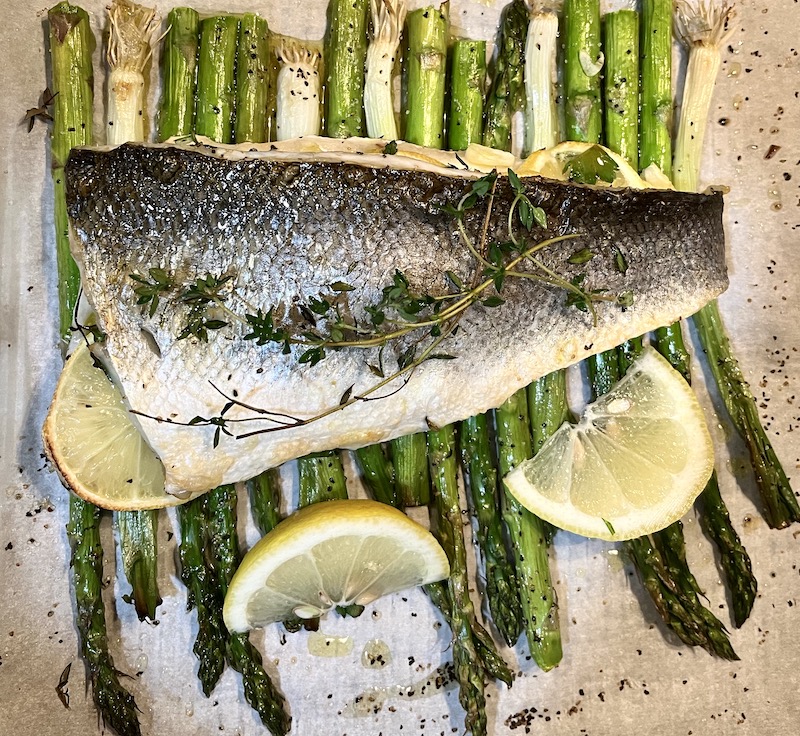Vegetarian options
It’s important to get a balanced nutrition with the proper amounts of proteins, carbs and fats in order to get the most out of your Challenge.
This blog post are just some vegetarian options when it comes to getting the most out of your Challenge. Many vegetarians think they just can’t get protein because they are vegetarians. That is not true.
Proteins are known as the building blocks of life In the body, they break down into amino acids that promote cell growth and repair. Here are some good vegetarian and vegan sources, and tips on how to add them to your diet today. We also included a number of healthy vegetarian recipes to help.
Green peas
Foods in the legume family are good sources of vegetarian protein, and peas are no exception: One cup contains 7.9 grams—about the same as a cup of milk. If you don’t like peas as a side dish, try blending them into a pesto. Blend frozen peas, toasted pine nuts, fresh mint, olive oil, and Parmesan cheese and serve over linguine.
Beans
There are many different varieties of beans—black, white, pinto, heirloom, etc.—but one thing they all have in common is their high amounts of protein. Two cups of kidney beans, for example, contain about 26 grams.
Go-to Recipes:
Mango Salsa Black Beans and Coconut Rice
Hot and Smoky New Orleans Red Beans and Rice
Palestinian Lentils and Rice
Indian Chickpea Stew with Brown Rice
Chickpeas
Also known as garbanzo beans, these legumes can be tossed into salads, fried and salted as a crispy snack, or pureed into a hummus. They contain 7.3 grams of protein in just half a cup, and are also high in fiber and low in calories. “You can make a really great meal with some whole-wheat flatbread, some veggies, and some homemade hummus,” says Gerbstadt. “Just toss a can of chickpeas in the blender with some herbs and some tahini or walnut oil and you’re good to go.”
Go-To Recipes
Get the Warm Pan of Chickpeas, Chorizo, and Chèvre recipe
Get the Basil Hummus recipe by Simply Recipes
Get the Garlicky Swiss Chard and Chickpeas recipe from FoodieCrush
Get the Curried Spaghetti-Squash-and-Chickpea Toasts recipe
Get the Warm Chickpea-and-Artichoke Pate recipe
Leafy greens
Vegetables don’t have nearly as much protein as legumes and nuts, Gerbstadt says, but some do contain significant amounts—along with lots of antioxidants and heart-healthy fiber.
Quinoa
Most grains contain a small amount of protein, but quinoa—technically a seed—is unique in that it contains more than 8 grams per cup, including all nine essential amino acids that the body needs for growth and repair, but cannot produce on its own. (Because of that, it’s often referred to as a “perfect protein.”) Plus, it’s amazingly versatile: Quinoa can be added to soup or vegetarian chili during winter months, served with brown sugar and fruit as a hot breakfast cereal, or tossed with vegetables and a vinaigrette to make a refreshing summer salad.
Go-to recipes:
Black Bean and Cilantro Quinoa-Stuffed Peppers
Roasted Strawberry Quinoa Parfait
Crispy Quinoa Fritters with Dill and Garlic Yogurt
Chocolate Quinoa Cookie Cake
Buckwheat
Protein: 6 Grams per 1 cup serving, cooked
Buckwheat is, in fact, not a type of wheat at all, but a relative of rhubarb. While the Japanese have turned the plant into funky noodles called soba, most cultures eat the seeds by either grinding them into flour (making a great base for gluten-free pancakes!) or cooking the hulled kernels, or “groats,” similarly to oatmeal.
Go-to recipes:
Buckwheat Chili
Mushroom Buckwheat Risotto with Goat’s Curd
Roasted Spiced Pumpkin with Toasted Buckwheat
Soba Noodles with Peanut Dressing
Tempeh and tofu
Foods made from soybeans are some of the highest vegetarian sources of protein: Tempeh and tofu, for example, contain about 15 and 20 grams per half cup, respectively.
Non-dairy milk
Milk alternatives aren’t just for the lactose intolerant: They can be great additions to any diet; just watch out for lots of added sugar and flavors, says Penner. (Plain soy milk, for example, contains about 100 calories per cup—comparable to skim milk’s 80 calories—but the flavored varieties can contain much more.) Soy milk has the most protein, at 4 to 8 grams per 8 ounces, but almond, hemp and rice milk also contain about 1 gram per cup.
Nuts and nut butter
All nuts contain both healthy fats and protein, making them a valuable part of a plant-based diet. But because they are high in calories—almonds, cashews, and pistachios for example, all contain 160 calories and 5 or 6 grams of protein per ounce—choose varieties that are raw or dry roasted. Nut butters, like peanut and almond butter, are also a good way to get protein. Look for brands with as few ingredients as possible—just nuts and maybe salt. Skip the ones with hydrogenated oils or lots of added sugar.
Sesame, sunflower and poppy seeds
Don’t discount the other seeds in your pantry, either; the more familiar varieties are also high in protein and healthy fats. (Per volume, sunflower seed kernels contain the most protein—7.3 grams per quarter cup—followed by sesame seeds and poppy seeds at 5.4 grams each.)
Hemp
This does not mean you’re eating rope (or marijuana) to your diet. You can find it in some cereals and trail mixes, or you can buy hemp seeds (10 grams of protein in 3 tablespoons) and add them to smoothies, pestos, or baked goods. Hemp milk can also be a dairy-free way to add protein to your diet, and it’s even lower in calories than skim milk.
Go-to recipes:
Raw Pumpkin Hemp Seed Protein Bars
Lemon Hemp Seed Cookies
Gluten-Free Pizza with Hemp Seed Pesto
Strawberry Blueberry Smoothie with Hemp Seeds
Another meat substitute popular with vegetarians, seitan is made from wheat gluten, seasoned with salt and savory flavors and loaded with protein—36 grams per half cup, more than either tofu or tempeh. It looks like duck meat and tastes like chicken, and can be used in any recipe that calls for poultry.
Go-to recipes:
Seitan Faijitas
Seitan Stir-Fry with Black Bean Sauce
Beer-Simmered Seitan Carnitas
Barbecue Seitan Sliders
Edamame
Not crazy about meat substitutes? Get your servings of soy the way it appears in nature: Straight from the soybean, still in the pod. Boiled edamame, which contains 8.4 grams of protein per half cup, can be served hot or cold and sprinkled with salt. Try it as a snack, an appetizer before dinner, or added to salads or pastas (minus the shell, of course.)
Myocoproteirn (Quorn)
Protein:13 Grams per ½ cup serving
Mycoprotein is sold under the name “Quorn” and is made by growing a certain kind of fungus in vats and turning it into meat substitutes that are packed with complete protien.
Go-to recipes:
Quorn-Stuffed Roasted Peppers
Mediterranean Vegetable and Quorn Puff Pie
Quorn Samosas
Quorn Lasagna
Chia seeds
These seeds—yes, from the same plant that’s used to make Chia Pet products — are an easy way to add protein (4.7 grams per ounce, about two tablespoons) and fiber to almost any recipe: Chia seeds can be sprinkled over salads, stirred into yogurt or oatmeal, blended into smoothies, or they can take center stage: They plump up and take on a gelatinous texture when soaked in a liquid, forming a rich and creamy pudding-like treat.
Go-to recipes:
Coconut Chia Pudding
Pear and Chia Whole Wheat Pancakes
Chia Vegan Protein Muffins
Spicy Roasted Cauliflower with Chia Seeds
What’s the Lean Lifestyle Challenge?
As you already know there are many different weight loss plans on the market. As a matter of fact there are over 4000 diet and exercise books in print and they all seem to contradict each other. High fat, low fat, eat this, eat that… People are confused to say the least. At Get You in Shape, we teach our clients that nutrition and supplementation account for 70%-80% of your progress when fat loss is the goal. The problem is that most focus on the exercise program only and don’t spend enough time learning what works with nutrition and supplementation. If you have been frustrated with diets in the past you are in the right place. Your frustration is over… Get You In Shape have been using a program called the Lean Lifestytle Challenge with amazing success. The average person is losing 8-10 pounds and 9 inches in their first 24 days, that’s average some are doing more. Let me be clear on one thing…this is not a diet. “Eat less to lose weight” doesn’t work. Diets have you feeling tired, hungry and so crabby that no one wants to be around you. We focus on feeding your body high quality nutrients that “feed muscle and starve unwanted body fat.” The best part is the Lean Lifestytle Challenge is a system. If you follow it step by step you will be successful.
Let’s hear from just of the many success stories that have benefited from the challenge.
15 Pounds Lost in 24 Days Father and Son lose 32 Pounds Total
Coppell Mom shares her story 11 Pounds Success in 24 Days
24 Day Challenge Success Story 12.5 Pounds in 24 Days
You have now heard from a few stories on how they have received great results from the the Lean Lifestytle Challenge Are you up to hearing more about it? How about getting started!!! We want to help you get results as the the 24 Day Challenge has been proven to work!
Here are some stories from Get You In Shape Clients that have received great results from the Lean Lifestytle Challenge
Here are a Few of the Great Success Stories



